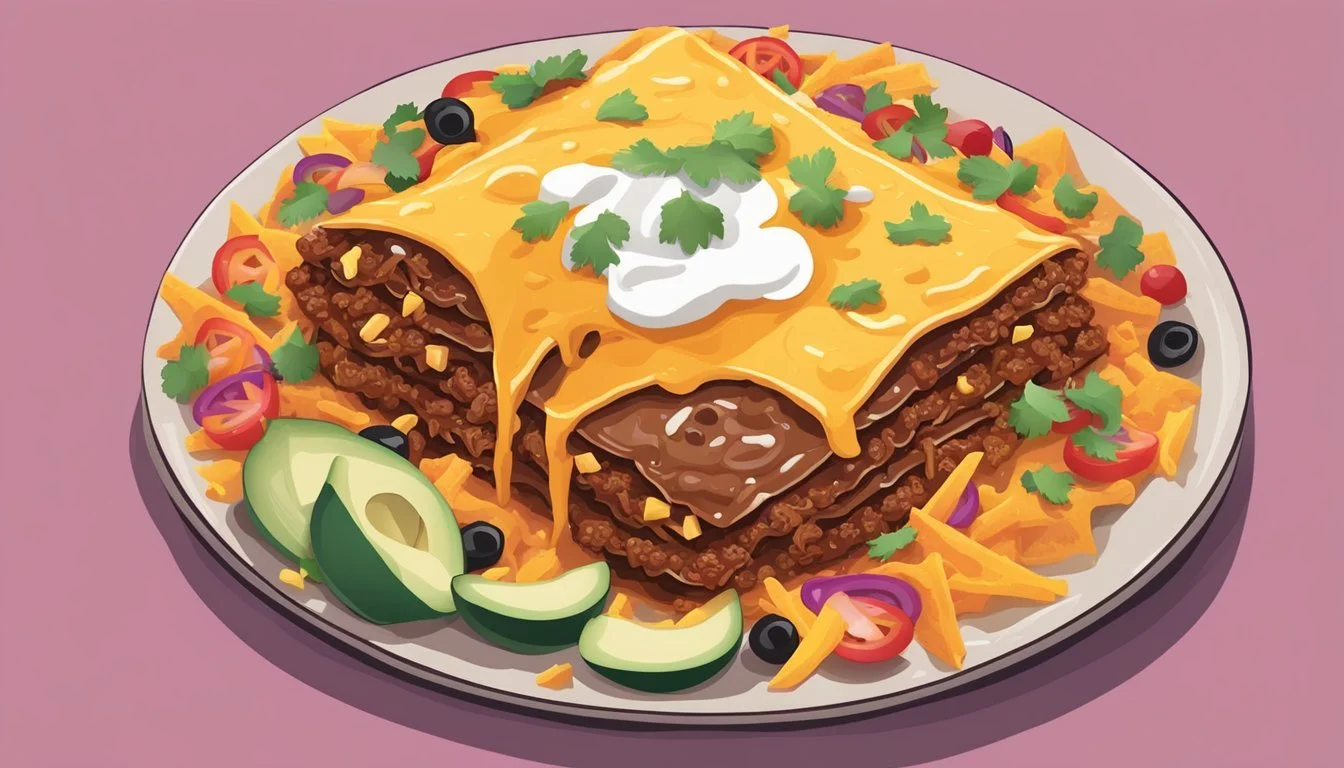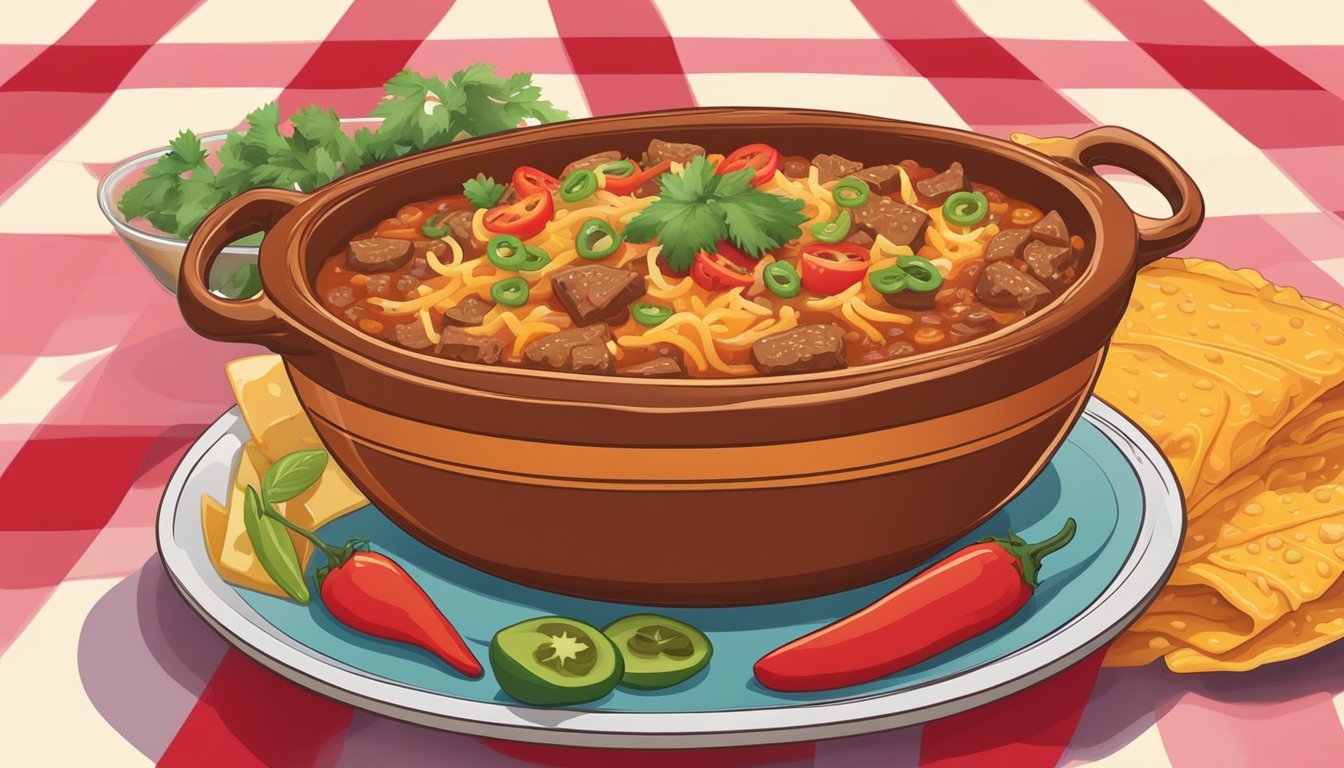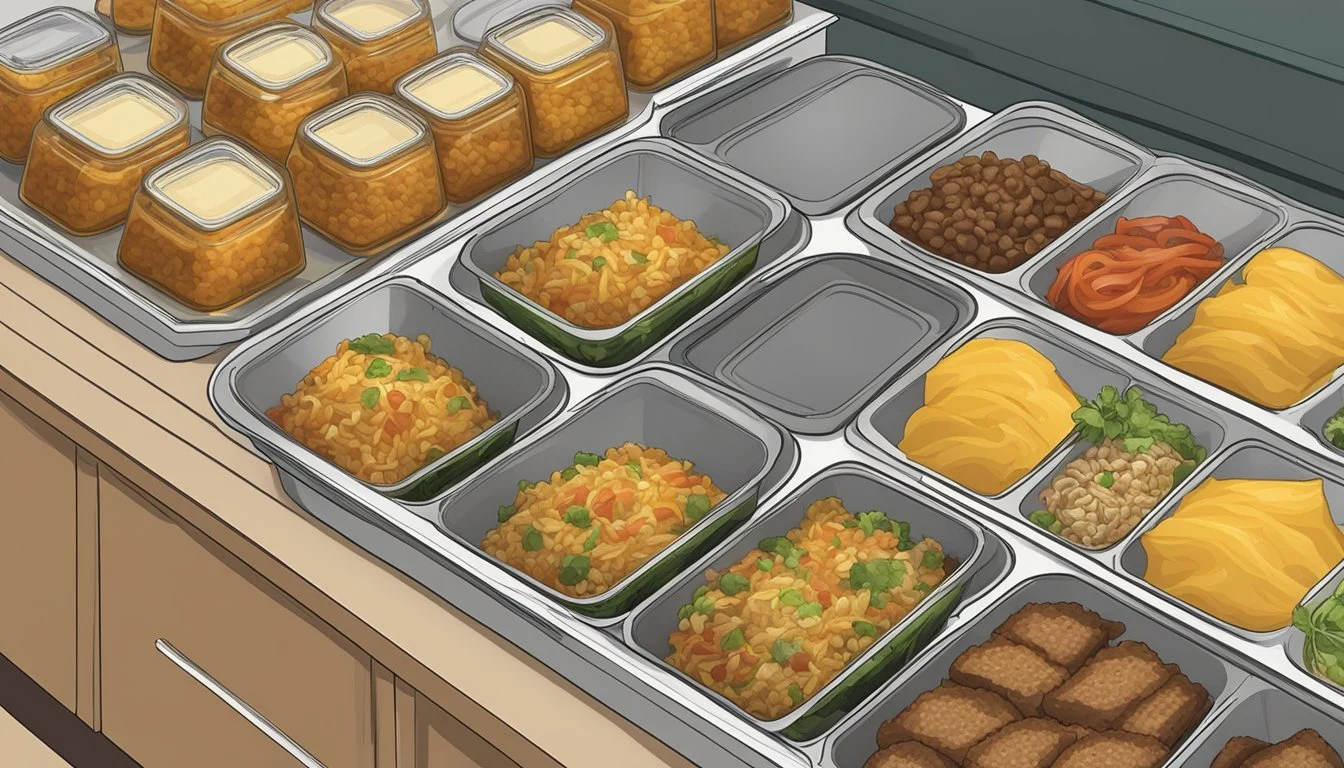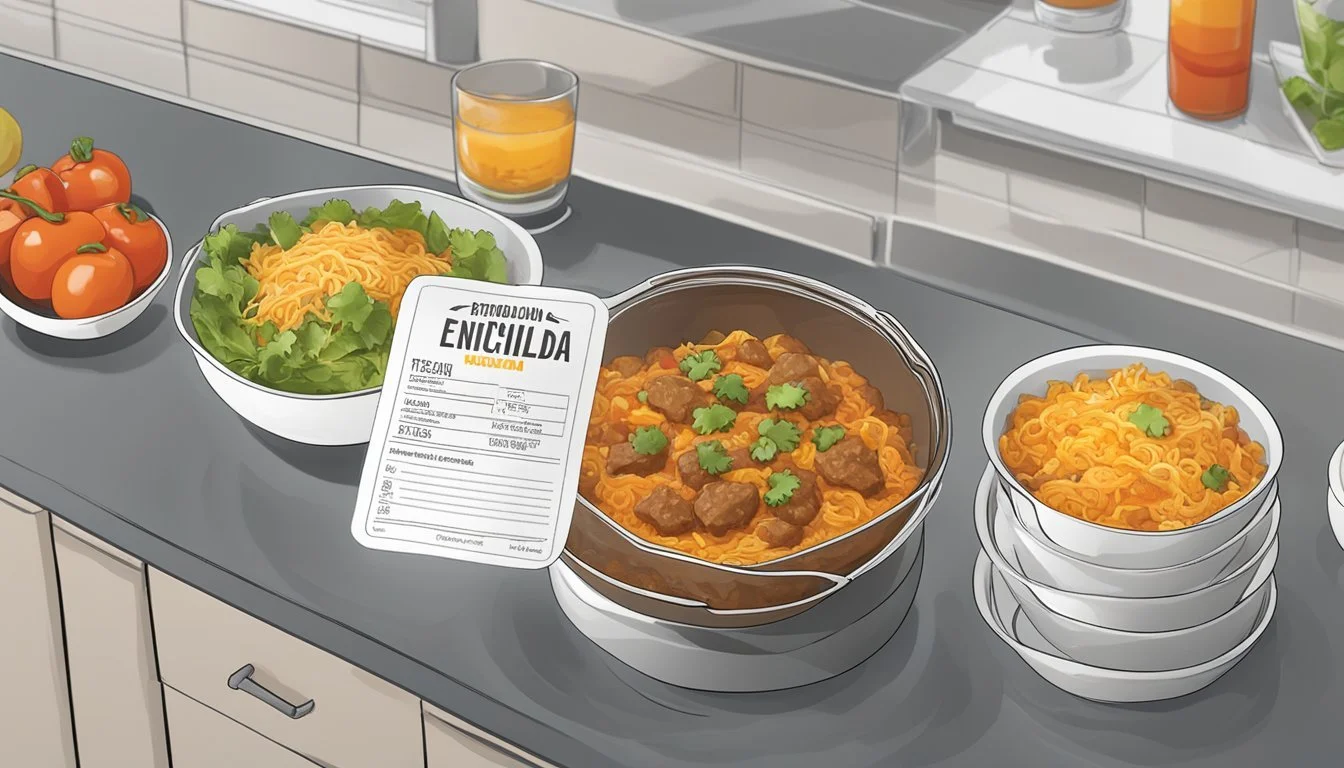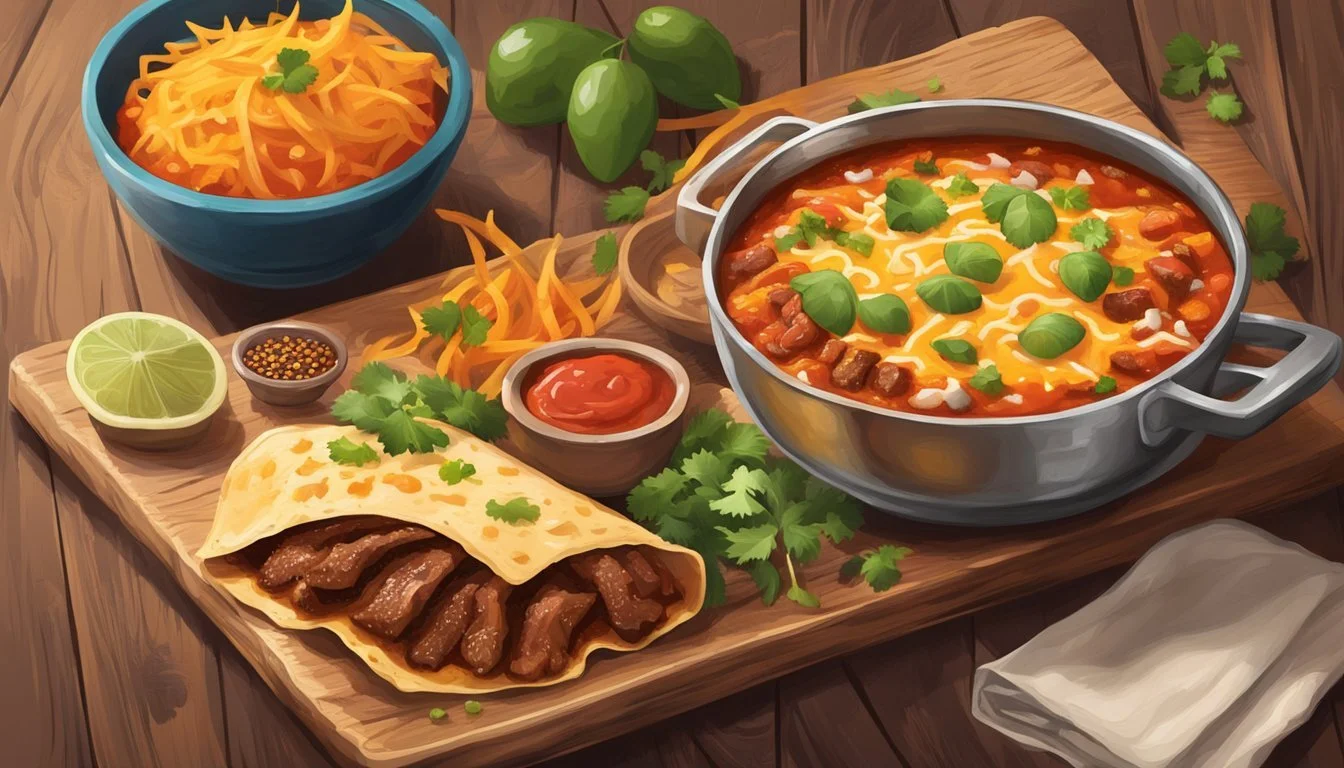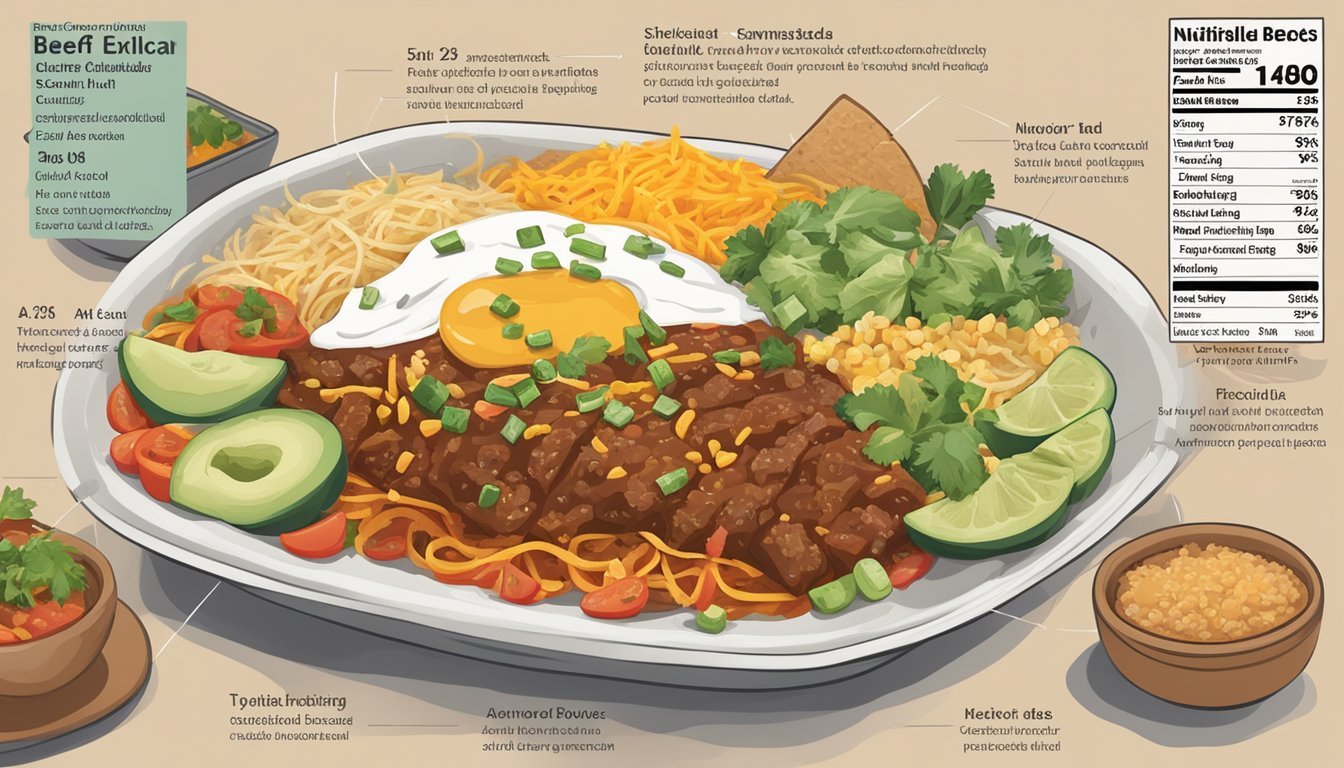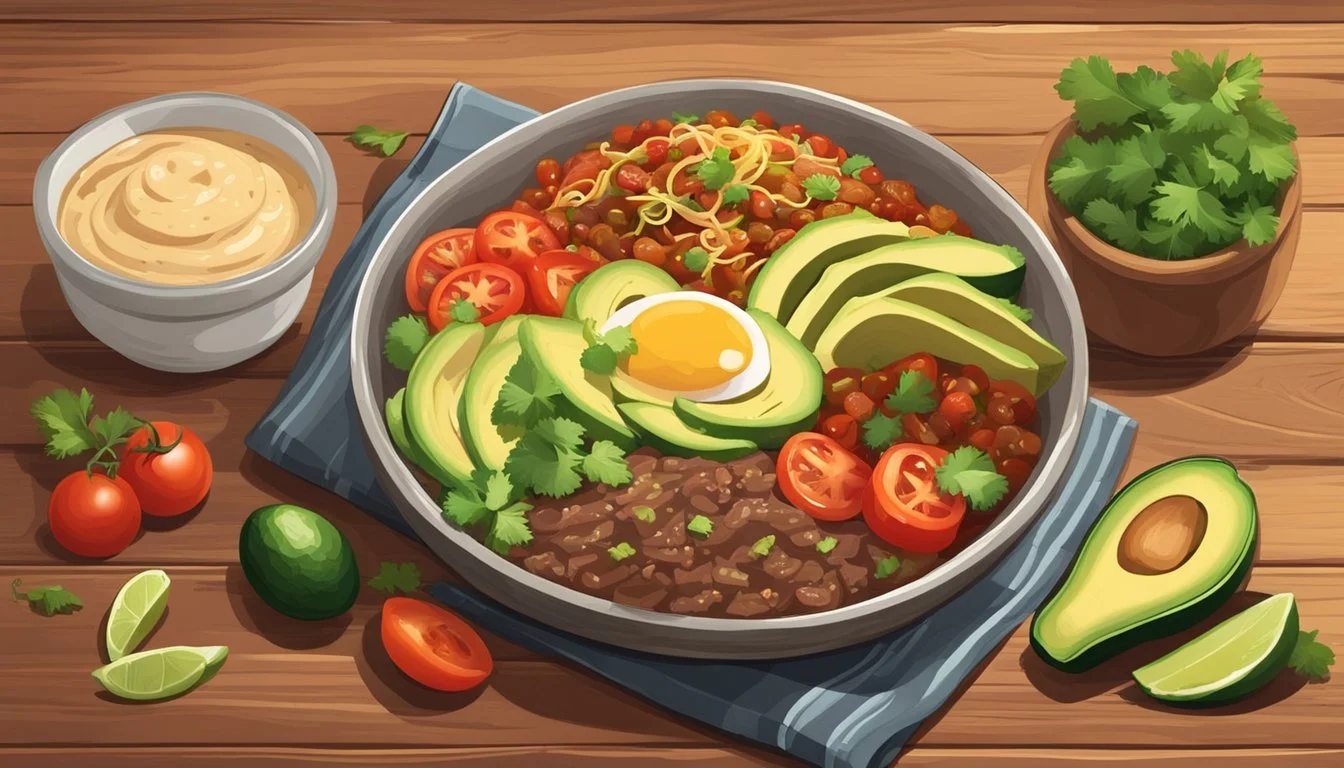How Long Do Beef Enchilada Bowls Last?
Storage Tips and Guidelines
Beef enchilada bowls are a delicious and convenient meal option, but knowing how long they last is essential for both safety and taste. Whether you’re making a big batch for the week or saving leftovers, beef enchilada bowls can typically be stored in the refrigerator for 3-5 days. This ensures that the ingredients remain fresh and safe to eat.
When properly stored in an airtight container, beef enchilada bowls maintain their flavor and texture. For those who want to extend their meal prep, freezing is a great option. Beef enchilada bowls can be frozen for up to 3 months, allowing you to enjoy this savory dish well beyond its refrigerated shelf life.
Beyond the practicalities of storage, reheating is straightforward. Whether using an oven, microwave, or stovetop, ensure the enchiladas are heated thoroughly before serving. This not only brings back the delicious flavors but also ensures the meal is safe to eat.
What Are Beef Enchilada Bowls?
Beef Enchilada Bowls are a modern twist on the traditional Mexican beef enchilada. They combine all the flavorful components of enchiladas but serve them in a bowl without the fuss of rolling tortillas. This dish is a convenient way to enjoy classic enchilada flavors in a more simplified form.
Ingredients typically include seasoned ground beef, enchilada sauce, and a variety of cheeses such as Monterey Jack or Cheddar. These elements create a rich and savory filling. Often, ingredients like onions, bell peppers, black beans, corn, and diced tomatoes are added to enhance the texture and taste.
Corn tortillas are sometimes used as a base or can be cut into strips and mixed throughout the bowl. This maintains the authenticity of the Mexican dish while allowing for easier preparation and serving.
The dishes are versatile and can be customized to suit individual tastes. For example, toppings like avocado, sour cream, and cilantro can be added for extra flavor and presentation.
Filling and hearty, Beef Enchilada Bowls are perfect for dinner. The combination of beef and enchilada sauce provides a rich, spicy backbone, while melted cheese adds creaminess. This makes it a popular choice for those seeking a quick yet satisfying meal with a touch of Mexican cuisine.
These bowls can be made ahead and are ideal for meal prepping, offering a convenient way to enjoy a delicious, homemade Mexican dish during busy weekdays.
Storage Fundamentals
Storing beef enchilada bowls properly ensures freshness and minimizes bacterial growth. Utilizing appropriate techniques for refrigeration and freezing can significantly extend their shelf life.
Refrigeration Techniques
To keep beef enchilada bowls fresh in the refrigerator, place them in airtight containers. This helps prevent bacterial growth and maintains the integrity of the ingredients. Use containers that seal well to avoid leakage and contamination.
Alternatively, plastic wrap can serve as an extra layer of protection. Cover the bowl tightly to prevent exposure to air. This method keeps the enchiladas fresh for about 3-5 days.
It’s advisable to label the containers with the date of preparation to keep track of freshness. Cilantro and other fresh toppings should be added just before serving to maintain their flavor and texture.
Freezing for Longevity
Freezing extends the shelf life of beef enchilada bowls up to 3 months. Use airtight containers or heavy-duty freezer bags to prevent freezer burn. Ensure the enchiladas are cooled before freezing to avoid condensation, which can cause ice crystals to form.
When freezing, arrange the bowls side by side, leaving a little space between them. This allows for quicker freezing, maintaining the quality of the ingredients.
Labeling the containers with the date helps identify the storage duration. Before reheating frozen enchilada bowls, thaw them overnight in the refrigerator to preserve texture and flavor.
Ingredients Impact on Shelf Life
The shelf life of beef enchilada bowls is influenced by the type and quality of ingredients used. Specific components like meat, dairy, spices, and vegetables each play a crucial role in determining how long the dish remains safe and flavorful.
Types of Ingredients
Different ingredients contribute to varying shelf lives due to their properties and susceptibility to spoilage. Fresh vegetables such as onions, garlic, and bell peppers should be monitored closely. Onions and garlic add robustness to the dish but can spoil quickly if not stored properly.
Canned or cooked black beans and corn are generally more stable but should still be consumed within a few days for optimal texture and flavor. Spices like cumin and chili powder enhance taste and are less prone to spoilage, contributing to sustained flavor over several days.
Dairy and Meat Considerations
Ground beef or shredded beef are high-protein ingredients that significantly impact shelf life. These proteins should be cooked to a safe temperature and stored below 40°F to prevent bacterial growth. Ground beef mixed with seasonings can last 3-4 days in the refrigerator if stored correctly, while dishes using cooked shredded beef follow a similar timeline.
Dairy components like cheddar and monterey jack cheese are essential for creamy texture but can be more perishable. These cheeses should be kept cold and covered to avoid moisture loss. The combination of dairy and meat requires careful attention to preservation methods such as airtight containers and consistent refrigeration to ensure the dish remains safe to eat for up to four days.
Safe Storage Duration
Beef enchilada bowls can be stored for different lengths of time depending on whether they are kept in the refrigerator or freezer. Proper storage ensures they remain tasty and safe to eat.
Refrigerator Expectancy
Beef enchilada bowls can be stored in the refrigerator for up to 3-5 days. It is essential to keep them in an airtight container to maintain freshness. The specific shelf life can vary depending on factors such as the freshness of the ingredients and the temperature of the refrigerator.
Frequent temperature changes in the fridge can accelerate spoilage. If in doubt, checking for signs of spoilage, such as off smells or changes in texture, can help determine if the enchiladas are still safe to eat.
Freezer Time Frame
When frozen, beef enchilada bowls can last for about 2-3 months. To freeze enchiladas, place them in freezer-safe containers or heavy-duty freezer bags. Labeling the containers with the date can help track storage time and ensure they are used within the best-by time frame.
Before reheating, it's crucial to thaw them safely, either in the refrigerator overnight or using the microwave's defrost setting. Proper reheating can prevent foodborne illnesses and ensure the enchiladas retain their flavor and texture.
Thawing and Reheating Instructions
To enjoy beef enchilada bowls with the best taste and texture, follow specific thawing and reheating procedures. These directions ensure the food is safe to eat and maintains its quality.
Thawing Procedures
Thawing beef enchilada bowls properly is crucial for both safety and quality. It's best to thaw them in the refrigerator overnight. This slow process helps preserve the original texture and flavor.
For faster thawing, place the enchilada bowl in a sink filled with cold water. Ensure the bowl remains sealed to prevent water from getting inside. Change the water every 30 minutes until thawed.
Avoid leaving the enchilada bowl at room temperature for long periods, as this can promote bacterial growth.
Reheating for Best Quality
Reheating beef enchilada bowls can be done using various methods to retain their flavors and textures. For reheating in the oven, preheat it to 350°F and place the contents in an oven-safe baking dish. Cover with aluminum foil to keep moisture in, and heat for 20-30 minutes.
Using a microwave is quicker but might affect the texture. Place the enchilada bowl on a microwave-safe plate, cover with a splatter guard, and reheat on high for 2-3 minutes, checking and stirring halfway through.
For a stovetop method, transfer the enchiladas to a skillet, add a bit of water or enchilada sauce, cover, and heat on medium for 5-7 minutes, stirring occasionally. This method can help revive some of the original texture.
Always ensure the enchiladas are heated to an internal temperature of 165°F before serving.
Recognizing Spoilage
Recognizing spoilage in beef enchilada bowls is essential for maintaining food safety.
Visual Signs: Look for mold growth. If you see any fuzzy or discolored patches, discard the dish. Discoloration in beef or other ingredients, such as turning an odd gray or green, also indicates spoilage.
Smell: A sour or off odor is a red flag. Fresh beef enchiladas should smell appetizing, not foul or musty.
Texture: The texture can also reveal spoilage. If the beef feels slimy or sticky instead of firm, it has likely gone bad.
Best Practices: Check storage practices. Ensure the enchiladas were stored at the proper temperature. Refrigerated at 40°F or below, and eaten within a few days is ideal.
Check the sauce: Avoid keeping enchilada sauce in the refrigerator for more than 2-3 weeks, as spoilage in the sauce can contaminate the whole dish.
Avoid cross-contamination: Keep cooked and raw items separate. This helps in preventing premature spoilage and extends the freshness of your enchilada bowls.
Stay vigilant, and when in doubt, it’s safer to discard potentially spoiled food to avoid health risks.
Enhancing Flavor & Texture
Optimal flavor and texture in beef enchilada bowls can be achieved by carefully choosing the right tortillas and complementing the dish with suitable cheese and toppings. Each component plays a critical role in the overall taste experience.
Tortilla Selection
Selecting between corn tortillas and flour tortillas impacts the texture and flavor.
Corn tortillas usually offer a slightly gritty texture that holds up well against the moisture of the enchilada sauce, making them an excellent choice for a more traditional and flavorful experience.
Flour tortillas, on the other hand, tend to be softer and can soak up the flavors from the sauce and beef mixture, creating a tender bite.
Both can be lightly toasted on a skillet for added texture before assembling the bowls. Additionally, wrapping the enchiladas in aluminum foil while reheating helps retain moisture and keeps the dish from drying out.
Cheese and Toppings
The selection of cheese and toppings can significantly elevate the dish.
Using a mix of cheeses, such as cheddar, Monterey Jack, and queso fresco, provides a cheesy and bubbly finish. Shredded cheese should be generously added to not only the filling but also the top layer before baking, ensuring that each bite is rich and satisfying.
Toppings like sour cream, guacamole, and freshly chopped cilantro are perfect for adding creaminess and freshness. Pico de gallo or salsa can introduce a burst of acidity and vibrant flavors.
A squirt of lime juice on top enhances the overall taste, while avocado slices offer a smooth texture that complements the flavorful beef enchiladas. An optional sprinkling of fresh cilantro brightens up the dish and amplifies the flavors.
Nutritional Information
Beef enchilada bowls boast a rich array of nutrients that contribute to a balanced diet. Understanding the key components such as macro and micro nutrients and calorie content is essential for dietary planning.
Macro and Micro Nutrients
These bowls often contain protein, carbohydrates, and fats. The ground beef is a primary source of protein, which is essential for muscle repair and growth. Olive oil used in cooking adds healthy monounsaturated fats.
Additionally, ingredients like black beans and corn provide fiber, aiding in digestion and promoting a feeling of fullness. They also contain essential vitamins and minerals such as iron, vitamin C, and potassium. The use of diced tomatoes introduces antioxidants and vitamin A.
Calorie Count Analysis
A typical serving of beef enchilada bowls can range from 300 to 400 calories. The exact count depends on portion sizes and additional toppings.
For example, adding sour cream or guacamole can significantly increase the calorie content. It's crucial to carefully measure these additions to maintain a calorie-controlled diet. Reducing the amount of cheese or using low-fat alternatives can also help manage the overall caloric intake.
Creative Variations
There's room for creativity when preparing beef enchilada bowls. Explore using alternative proteins to add a new twist, or make vegetarian options that are just as satisfying.
Alternative Proteins
For those looking to switch up from traditional beef, chicken enchiladas offer a leaner choice. Use shredded chicken breast seasoned with oregano, cumin, and chili powder. Another fantastic option is pork; slow-cooked pulled pork provides a rich, tender texture perfect for enchilada bowls.
Turkey is another versatile substitute, especially lean ground turkey, which keeps the dish lower in fat. Ground turkey can be seasoned similarly to beef and works well with black beans and corn. Each of these proteins maintains the hearty nature of the dish while varying its flavor profile significantly.
Vegetarian Options
For vegetarian versions, black beans and corn serve as excellent protein sources. The combination can be cooked with sautéed bell peppers, squash, and zucchini to add a variety of textures and flavors. The black beans add substance, while the vegetables provide freshness and crunch.
A rich mix of spices like cumin, chili powder, and garlic ensures the dish is flavorful. Adding cheese, such as Monterey Jack or cheddar, enhances the overall taste while a sprinkle of cilantro and a squeeze of lime juice add a refreshing finish. Substituting beans and vegetables makes the dish suitable for vegetarians without compromising on taste or satisfaction.

